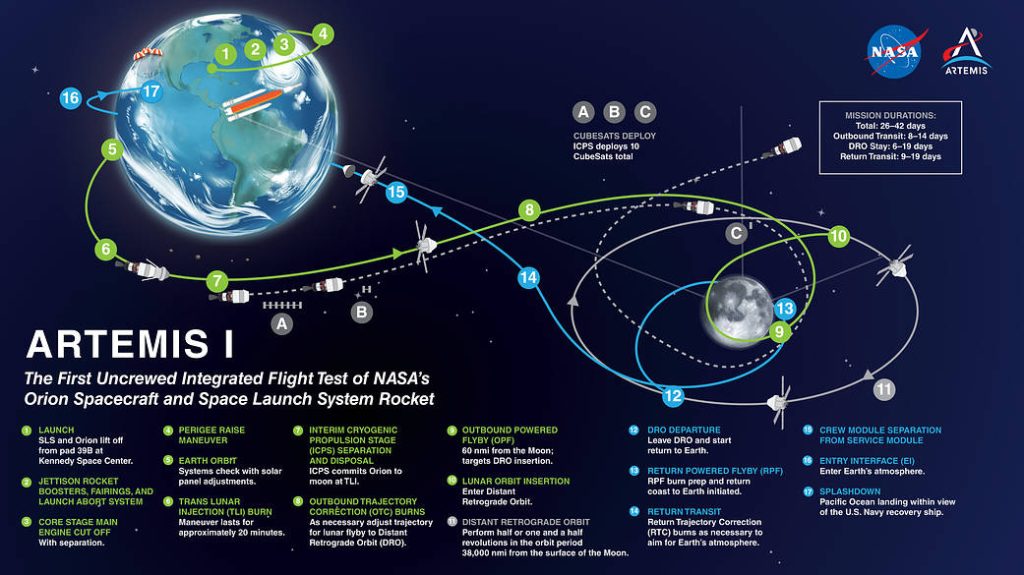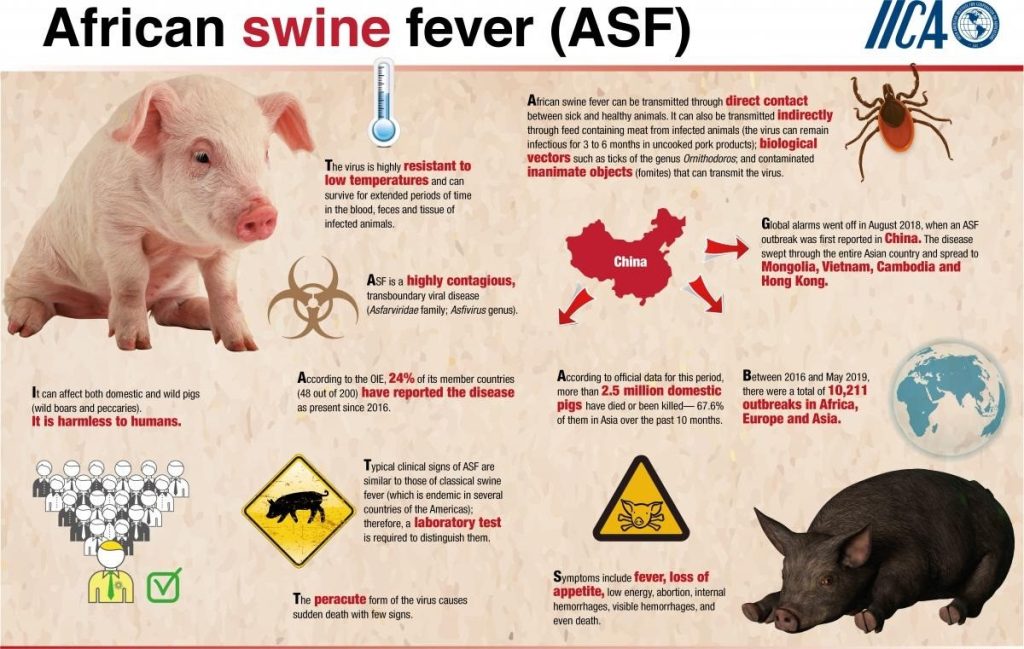CONTENTS
- Nikshay Poshan Yojana
- Bhitarkanika National Park
- INS Vikrant
- Artemis I Mission
- African swine fever
- Vishnugadh Project
Nikshay Poshan Yojana
Context:
Only two-thirds of people living with tuberculosis benefitted from the Union government’s Nikshay Poshan Yojana (NPY), sole nutrition support scheme, in 2021, which raises major public health concern.
Relevance:
GS II: Government policies and Interventions
Dimensions of the Article:
- Nikshay Poshan Yojana (NPY)
- About Tuberculosis
- Status of TB in India
Nikshay Poshan Yojana (NPY)
- It is a direct benefit transfer (DBT) scheme for nutritional support to Tuberculosis (TB) patients rolled out in April 2018 by Ministry of Health and Family Welfare.
- The scheme is a centrally sponsored scheme under National Health Mission (NHM).
- Financial norms of NHM in terms of cost sharing are applicable to the scheme.
- This scheme is implemented across all States and UTs in India.
- All TB patients notified on or after 1st April 2018 including all existing TB patients under treatment are eligible to receive incentives.
- The patient must be registered\notified on the NIKSHAY portal.
Performance:
- As per India TB Report 2022, only 62.1 % of 2.1 million notified cases across the country received at least one payment in 2021.
- In Delhi, which has the highest burden of all forms of TB at 747 cases per 100,000 people, only 30.2 % of patients have got at least one DBT.
- Other poor performers are Punjab, Jharkhand, Maharashtra, Bihar, Rajasthan and Uttar Pradesh. In the North East, Manipur and Meghalaya fared the worst.
About Tuberculosis
- TB remains the world’s deadliest infectious killer.
- Each day, over 4000 people lose their lives to TB and close to 30,000 people fall ill with this preventable and curable disease
- TB is caused by bacteria (Mycobacterium tuberculosis) that most often affect the lungs.
- Transmission: TB is spread from person to person through the air. When people with TB cough, sneeze or spit, they propel the TB germs into the air.
- Symptoms: Cough with sputum and blood at times, chest pains, weakness, weight loss, fever and night sweats.
- Treatment: TB is a treatable and curable disease. It is treated with a standard 6 month course of 4 antimicrobial drugs that are provided with information, supervision and support to the patient by a health worker or trained volunteer.
- Anti-TB medicines have been used for decades and strains that are resistant to 1 or more of the medicines have been documented in every country surveyed.
- Multidrug-resistant tuberculosis (MDR-TB) is a form of TB caused by bacteria that do not respond to isoniazid and rifampicin, the 2 most powerful, first-line anti-TB drugs. MDR-TB is treatable and curable by using second-line drugs.
- Extensively drug-resistant TB (XDR-TB) is a more serious form of MDR-TB caused by bacteria that do not respond to the most effective second-line anti-TB drugs, often leaving patients without any further treatment options.
Status of TB in India
- According to the India TB Report 2022, there were over 19 lakh TB patients overall in 2021. It increased by 19% to be over 16 lakhs in 2020.
- Between 2019 and 2020, the death rate in India from all forms of tuberculosis climbed by 11%.
- The predicted total number of TB-related deaths in 2020 was 4.93 lakh, which is 13% more than the 2019 forecasts.
- The comorbidities that affect a person with TB include malnutrition, HIV, diabetes, alcoholism, and tobacco use.
-Source: Down to Earth
Bhitarkanika National Park
Context:
Recently, the Bhitarkanika National Park have reached a saturation point in the population of crocodile which could lead to more human-Crocodile conflict.
Relevance:
GS II: Government policies and Interventions
Dimensions of the Article:
- About Bhitarkanka National Park
- What are the Issues?
About Bhitarkanika National Park
- In Orissa’s Kendra Para district is Bhitarkanika, a special environment of mangrove forests laced with numerous streams and mud flats.
- Bhitarkanika is situated in the estuary of the Brahmani, Baitarani, and Dharma & Mahanadi River systems and is a Ramsar Site under the Ramsar Convention on Wetlands.
- The Gahirmatha Marine Sanctuary, which has the biggest population of Olive Ridley sea turtles in the world for congregating and nesting, receives nutrients from Bhitarkanika.
- Every winter, around 500,000 turtles come here.
- Bhitarkanika National Park is a prime habitat of leopard cat, fishing cat, jungle cat, hyena, wild boar, spotted deer, sambar, porcupine, dolphin, salt water crocodile including partially white crocodile, python, king cobra, water monitor lizards, terrapin, marine turtle, kingfisher, wood pecker, hornbill, bar headed geese, pintail, white bellied sea eagle, tern, sea gull, waders and a large variety of resident and migratory birds.
What are the Issues?
- Since 2012, crocodiles have killed around 50 individuals in and around the park, while 25 of them perished after getting into human settlements or getting tangled in fishing nets.
- Because crocodiles are territorial aquatic reptiles, it is impossible for too many of them to coexist in one location because there will be more rivalry for food, mates, and sunbathing spots.
- In 1991, the state forest department was ordered by the Union Ministry of Forest and Environment to discontinue the crocodile rearing operation in Bhitarkanika because the crocodile population had reached a saturation point.
- However, the government stopped funding for the crocodile breeding and rearing project in 1990.
- Additionally, the crocodile population in the park had increased from 94 in 1975 to roughly 1,000 by 1995, when the forest service terminated the programme for breeding and releasing crocodiles there.
-Source: Down to Earth
INS Vikrant
Context:
The nation’s first Indigenous Aircraft Carrier (IAC-1) will be commissioned on September 2, the Indian Navy has announced.
Relevance:
GS II: Science and Technology
Dimensions of the Article:
- About INS Vikrant:
- Why is it important for India to have an aircraft carrier?
- What weapons and equipment will the new ‘Vikrant’ have?
About INS Vikrant:
- Vikrant is the largest warship to have ever been built in India, and the first indigenously designed and built aircraft carrier for the Indian Navy.
- It puts India in an elite club of nations that have the capability to design and build these giant, powerful warships.
- The Navy took delivery of the warship, designed by the Warship Design Bureau (WDB), its in-house organisation, from the manufacturer, Cochin Shipyard Ltd (CSL), a public sector shipyard under Ministry of Ports, Shipping & Waterways
- The 262 m long and 62 m wide ‘Vikrant’ displaces approximately 43,000 tonnes when fully loaded, and has a maximum designed speed of 28 knots (about 52 km/h) with an endurance of 7500 NM.
- The ship has around 2,200 compartments designed for a crew of around 1,600, including specialised cabins to accommodate women officers and sailors.
- The carrier is designed with a very high degree of automation for machinery operations, ship navigation and survivability.
- The carrier is equipped with the latest state of the art equipment and systems.
- It boasts a fully-fledged state of the art medical complex with the latest medical equipment facilities including major modular OT, emergency modular OT, physiotherapy clinic, ICU, laboratories, CT scanner, X-Ray machines, dental complex, isolation ward and telemedicine facilities.

Why is it important for India to have an aircraft carrier?
- An aircraft carrier is one of the most potent marine assets for any nation, which enhances a Navy’s capability to travel far from its home shores to carry out air domination operations.
- Many experts consider having an aircraft carrier as essential to be considered a “blue water” navy — that is, a navy that has the capacity to project a nation’s strength and power across the high seas.
- An aircraft carrier generally leads as the capital ship of a carrier strike/ battle group.
- As the aircraft carrier is a prized and sometimes vulnerable target, it is usually escorted in the group by destroyers, missile cruisers, frigates, submarines, and supply ships.
- Only five or six nations currently have the capability of manufacturing an aircraft carrier, and India has joined this prestigious club now.
- India has had aircraft carriers earlier too — but those were built either by the British or the Russians.
- The ‘INS Vikramaditya’, which was commissioned in 2013 and which is currently the Navy’s only aircraft carrier, started out as the Soviet-Russian warship ‘Admiral Gorshkov’.
- India’s two earlier carriers, the ‘INS Vikrant’ and the ‘INS Viraat’, were originally the British-built ‘HMS Hercules’ and ‘HMS Hermes’. These two warships were commissioned into the Navy in 1961 and 1987 respectively.
What weapons and equipment will the new ‘Vikrant’ have?
- The new warship is comparable to India’s existing carrier ‘INS Vikramaditya’, which is a 44,500-tonne vessel and can carry up to 34 aircraft, including both fighter jets and helicopters.
- Once commissioned, IAC-1 will be “the most potent sea-based asset”.
- Ship will be capable of operating 30 aircraft including MiG-29K fighter jets, Kamov-31 Air Early Warning Helicopters, MH-60R Seahawk multi-role helicopters, as well as the Advanced Light Helicopters (ALH) built by Bengaluru-based Hindustan Aeronautics Ltd, and the indigenously manufactured Light Combat Aircraft (LCA) (Navy).
- Using a novel aircraft-operation mode known as Short Take Off But Arrested Recovery (STOBAR), the IAC is equipped with a ski-jump for launching aircraft, and a set of three ‘arrester wires’ for their recovery onboard.
- The MiG-29K and Kamov-31 aircraft are already in use on the ‘Vikramaditya’.
- The MH-60R Seahawks are manufactured by the American aerospace and defence company Lockheed Martin. The new warship will offer an “incomparable military instrument with its ability to project Air Power over long distances, including Air Interdiction, Anti-Surface Warfare, offensive and defensive Counter-Air, Airborne Anti-Submarine Warfare and Airborne Early Warning”.
-Source: Indian Express
Artemis I Mission
Context:
National Aeronautics and Space Administration (NASA) is about to launch its Artemis Program.
Relevance:
GS III: Science and Technology
Dimensions of the Article:
- About Artemis I Mission:
- Key Events During the Mission
About Artemis I Mission:

- Almost fifty years after the Apollo mission, NASA is gearing up to return humanity to the Moon with its Artemis program.
- Artemis I, an uncrewed mission that is the first in a series of increasingly complex missions, will test the agency’s Space Launch System (SLS) rocket and Orion crew capsule.
- The primary goals for Artemis I are to demonstrate Orion’s systems in a spaceflight environment and ensure a safe re-entry, descent, splashdown, and recovery prior to the first flight with crew on Artemis II.
Key Events During the Mission
Artemis I launch
- The SLS rocket and Orion spacecraft completed their approximately six-and-a-half kilometre journey from their assembly building to Launch Complex 39B at the Kennedy Space Centre.
- At launch, the rocket will produce a maximum of more than 3.9 million kilograms of thrust from its four RS-25 engines and five-segment boosters.
- Shortly after launch, the boosters, service module and launch abort systems will be jettisoned. Then, the core stage engines will be shut down and the core stage will separate from the spacecraft.
Artemis I: Trajectory to the moon
- After launch, the spacecraft will orbit the Earth and deploy its solar arrays.
- Next, the Interim Cryogenic Propulsion Stage (ICPS) will give Orion a “push” to help it leave Earth’s orbit and travel toward the planet’s only natural satellite.
- Then, within about two hours from launch time, when the spacecraft is on a trajectory to the Moon, it will separate from ICPS.
- When it separates from the spacecraft, ICPS will deploy small satellites, known as CubeSats to send them on their journey to deep space.
- This includes BioSentinel, which will carry yeast into deep space to study the effects of deep space radiation on living matter.
- The other CubeSats will also perform many science and technology demonstrations.
Artemis I: Moon orbit
- On its path to the Moon, Orion will be propelled by a service module built by the European Space Agency.
- Apart from supplying the spacecraft’s propulsion system and power, the service module is also designed to house air and water for future crewed missions.
- The trip to the Moon will take several days.
- Once it enters the Moon’s orbit, the spacecraft will stay there for approximately six days as it collects data, also giving the mission team enough time to assess its performance.
- After the six days, Orion will get very close to the moon, about 95 kilometres above its surface, and it will use a precisely timed engine firing of the service module in combination with the Moon’s gravity to accelerate back towards our planet.
Artemis I: Reentry into Earth’s atmosphere
- After a total mission time of around 6 weeks and having travelled more than 3 million kilometres, Orion will enter Earth’s atmosphere at around 40,000 kilometres per hour, or 11 kilometres per second.
- During reentry, it will produce temperatures close to 3,000 degrees Celsius.
- And if all goes as planned, it will land in the sea, within eyesight of a recovery ship which will be waiting, stationed off the coast of Baja in California.
- After landing, the spacecraft will remain powered for some time till a team of US Navy divers and NASA Exploration Ground System members approach it in small boats from the ship.
- The team will first inspect the aircraft before the divers tow the capsule towards the recovery ship.
-Source: Indian Express
African Swine Fever
Context:
The Punjab government on Friday declared two villages, one each in Patiala and Fatehgarh Sahib, as African swine fever (ASF) affected zones and notified these areas as ‘infected zones’ for the prevention of the spread of fever.
Relevance:
Focus: GS-III Science and Technology
Dimensions of this Article:
- What is African Swine Fever?
- What are the symptoms of African swine fever?
What is African Swine Fever?

- African Swine Fever (ASF) does not affect humans but can be catastrophic for pigs.
- In 2019, the outbreak of the disease swept through pig populations in China — which is the largest exporter and consumer of pork — leading to large-scale cullings.
- ASF is a severe viral disease that affects wild and domestic pigs typically resulting in an acute haemorrhagic fever.
- The disease has a case fatality rate (CFR) of almost 100 per cent.
- Its routes of transmission include direct contact with an infected or wild pig (alive or dead), indirect contact through ingestion of contaminated material such as food waste, feed or garbage, or through biological vectors such as ticks.
- Any country with a pig sector is at risk of the spread of the disease and its spread is most likely via meat arriving aboard ships and planes, which is incorrectly disposed of and by meat carried by individual travellers.
What are the symptoms of African swine fever?
- High Fever
- Weakness and Difficulty Standing
- Vomiting
- Diarrhea
- Red or blue blotches on the skin (Particularly around ears and snout)
- Coughing or labored breathing
-Source: The Hindu
Vishnugadh Project
Context:
An independent panel of the World Bank is considering a plea by residents of some village to investigate environmental damage from the under-construction Vishnugad Pipalkoti Hydro Electric Project (VPHEP).
Relevance:
GS III: Indian Economy (Infrastructure)
Dimensions of the Article:
- Details
- Vishnugadh Project
Details
- According to the residents’ complaint, the nearby Lakshmi Narayan Temple, which is regarded as having historical and cultural significance, is in danger due to muck dumping from the dam.
- They also complained the low water supply, claiming that only two hours of water were provided to 70 out of 92 houses each day.
- They were able to easily access water prior to the project’s development.
Vishnugadh Project
- The Tehri Hydropower Development Corporation (THDC), a largely State-owned company, is constructing the 444-MW VPHEP.
- It is being built in Uttarakhand’s Chamoli District beside the Dhauliganga River.
- The World Bank provides the majority of the funding for the project, which was approved in 2011. June 2023 is the projected completion date.
- A little over 40% of the project’s $792 million budget (about 64,000 crore) has already been spent.




